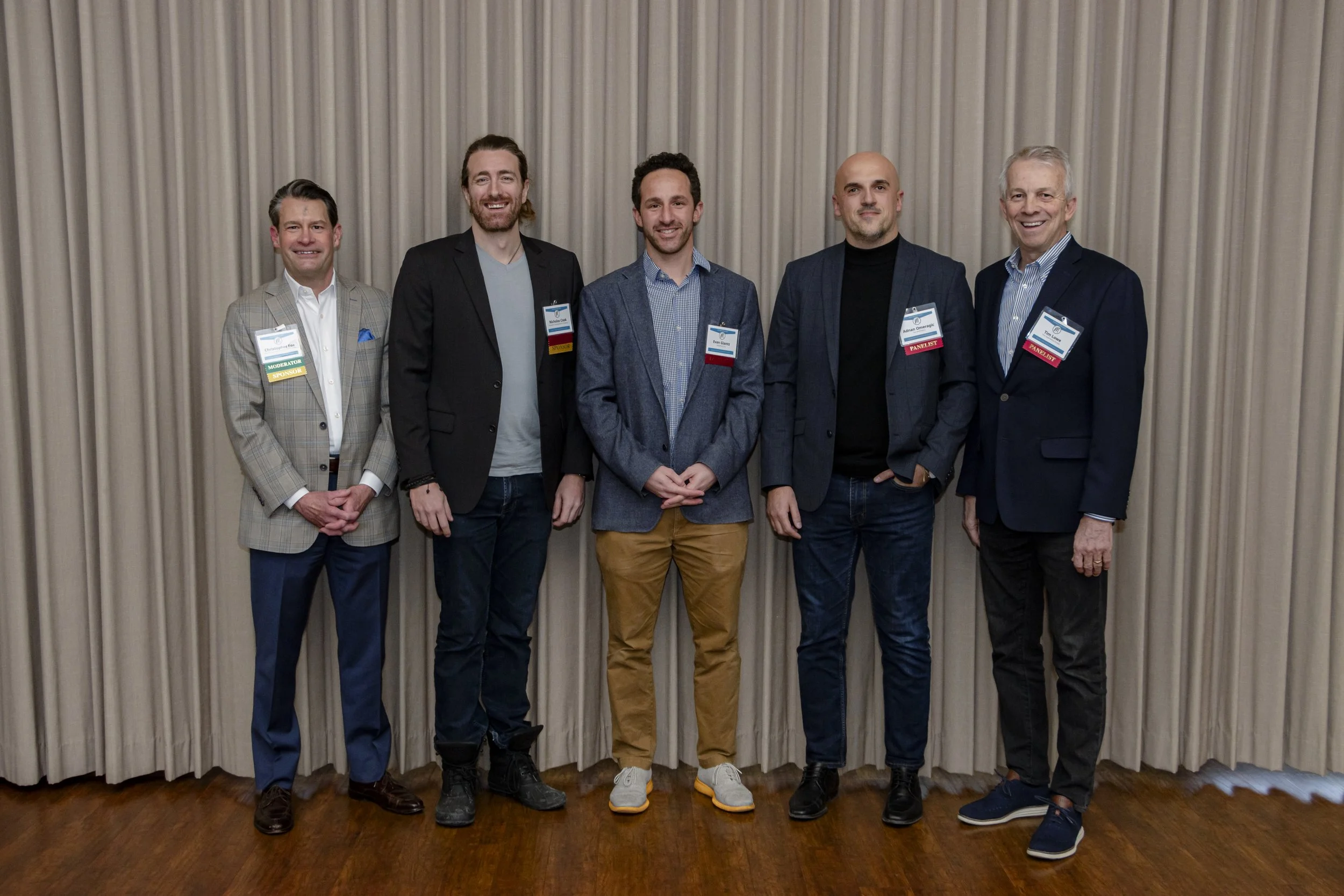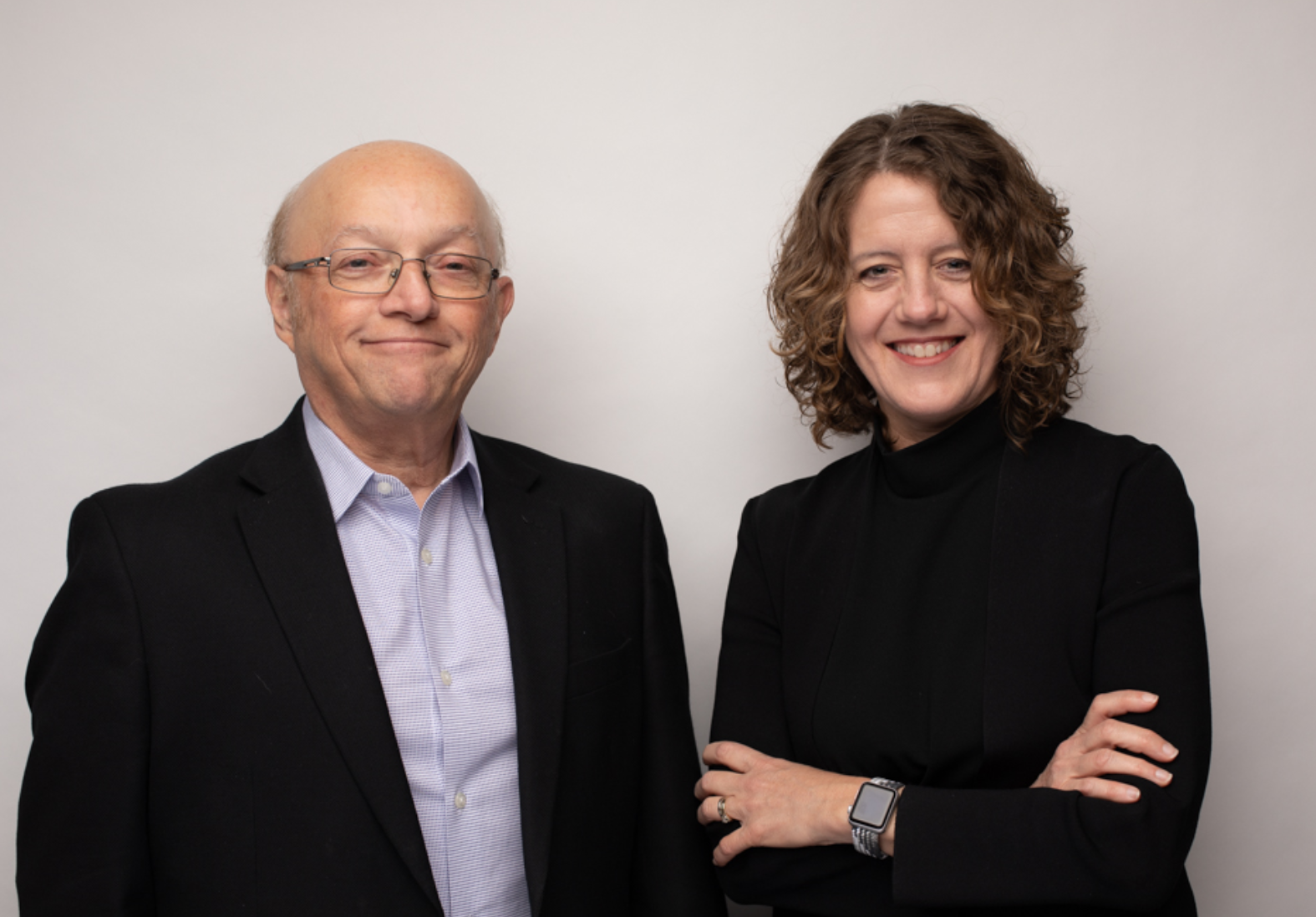Delays and higher shipping costs have impacted consumers coast-to-coast and underscore the need for new shipping alternatives - can the St. Louis region deliver?
Striking images of dozens of container ships berthed outside of already congested West Coast ports, plus photos and video showing a 1,300-foot-long container ship stuck in the Suez Canal, have landed supply chain industry news in the forefront for consumers in recent months.
While the visuals may be what has caught the attention of people who normally do not give much thought to the movement of freight, the ripple effect of these global incidents on the heels of supply chain disruption caused by the COVID-19 pandemic is being felt nationwide and in the St. Louis region. It also is reinforcing the importance of having a resilient supply chain and calling attention to the role the St. Louis region could play in providing options for shippers in this evolving environment.
Panos Kouvelis has looked extensively into this subject over the past year, interviewing multiple local and global companies with complex supply chains. He found resiliency in the supply chain comes down to two things.
“When we think about resilience, we say redundancy and flexibility. Those are the two things you've got to build,” said Kouvelis, director of the Boeing Center for Supply Chain Innovation (BCSCI) in the Olin Business School at Washington University in St. Louis, Mo.
Redundancy and flexibility might have helped avoid some of the early pain when the COVID-19 pandemic started and consumers grappled with shortages of toilet paper, sanitizer and paper towels; but those proved to be just a minor annoyance. The global supply chain disruptions experienced in recent weeks are having a much more significant impact.
Due to the shortage of semiconductor chips, General Motors announced in late March it was idling the General Motors Wentzville plant for two weeks, starting March 29. The move affected not just the more than 3,500 employees at the St. Charles County facility, but also the associated suppliers, not to mention the nearby restaurants for whom GM employees are core customers. Other consumers throughout the region are finding their orders for furniture, TVs, laptops and countless other household goods not only delayed, but ultimately costing more as higher shipping costs are getting passed along to end consumers.
As Kouvelis and his colleagues reviewed the pandemic year to see its impact on the manufactured durable goods global supply chains, they feared supply shocks and expected some temporary pandemic pain; but, surprisingly, it was strong consumer demand coming back that caused the most disruption. As summer came, and most Americans became adjusted to a life with limited or no access to dining services, sports venues and other entertainment, gyms and restricted air travel, they turned to projects for their houses, kitchens, cars, in-home entertainment devices, exercise equipment, power tools and boats.
“The demand for those products came back at a speed of recovery and level nobody expected,” Kouvelis said. “And the shortages were compounded by severe shortages of products such as semiconductors, the essentials of ocean and trucking transportation – shipping containers, and raw materials, such as aluminum, titanium and even stainless steel.”
Adding to the high demand were the delays due to continued congestion at the West Coast ports and the even more recent disruption caused by the blockage in the Suez Canal that backed up more than 400 other ships carrying millions of tons of cargo for days. Kouvelis said he expects the shortages will be longer lasting, resulting in consumers having to wait longer and pay higher prices to get their durable goods.
Such challenges actually bode well for the St. Louis region, where the strength of the existing freight infrastructure and innovative collaborations are providing even more reasons for shippers to consider routing freight through the bi-state area. In fact, it appears a hallmark of the St. Louis region’s freight network is its inherent flexibility and redundancy.
“You have so many assets. You have the network of the roads; you have the rail and then you have the Mississippi River. And then of course, the airports as well,” said Kouvelis. “But, again, I think the use of the intermodal and the heavier use of the river is the flexibility that you can offer that sometimes is not fully exploited.”
That is changing with the 2020 launch of Container-on-Barge (COB) services from America’s Central Port and advancing plans to bring innovative Container-on-Vessel (COV) services to the St. Louis region and the Midwest. Kouvelis is enthusiastic about the proposed services, noting that, as a logistics person, everything is about the 20-foot containers and how you move them and how having them sitting around is a not a good thing.
“If we manage to basically use the transit capacity in a way that we get to free up, for longer trips, the intermodal and the river and the other assets that should be used instead of the truck, that will basically relieve bottlenecks at the ports and start moving things towards the middle of the country,” said Kouvelis. “And that's where we get a big, big advantage with this type of initiative.”
Through his research over the past year and ongoing relationships with global companies headquartered in or having a significant presence in the bi-state St. Louis region, Kouvelis also noted there are tremendous examples of supply chain resiliency among them.
He cited Emerson, which has headquarters in St. Louis and facilities in the bi-state area, and credited it as one of the most resilient companies in the region. He said one thing that has made Emerson more resilient over time is a change in their supply chain strategy. He said Emerson had been very heavy on sourcing from Asia but, over time, it developed a regionalized supply chain strategy. It strives to have a supply chain in North America for North America and in Asia for Asia and operate in Europe for Europe. These more regional supply chains have been an effort to bring things closer to the market. As a result, Emerson either has its own facilities or it has suppliers that are in the region to positively impact lead times. Kouvelis believes this is good for the St. Louis region, as it might bring more manufacturing closer to the region, especially since it is an environment that will make investments in infrastructure.
Kouvelis called attention to Bunge, which has gradually increased its presence in the bi-state region to leverage its logistics advantages, especially the river. Its new headquarters is located in Chesterfield, Mo., a research and development center is located in St. Charles County, and its barge loading/grain facility is located in Fairmont City, Illinois, part of the Ag Coast of America. He also cited AB-InBev, and how the pandemic reinforced that the beer business is a logistics business.
“From a logistics business perspective, they are really the best,” said Kouvelis. “They don't want to change St. Louis from being the logistics hub. They have moved marketing functions and finance functions to New York. But the logistics have stayed in St. Louis.”
He pointed to AB Mauri® North America, the yeast manufacturer based in St. Louis, which saw demand increase by an estimated 400% during the pandemic, and highlighted Bayer, Millipore Sigma and Belden, which all have a strong presence in the region and share the common thread of resiliency in their supply chains -- resiliency that has been years in the making. All of the companies Kouvelis has been engaging with have been willing to talk about their best practices for dealing with supply chain disruptions, sharing important knowledge for the benefit of all, without revealing private information.
Kouvelis believes other companies can learn from these corporations and he shared several key takeaways. Companies need some redundancy in their assets, either in facilities or in the inventories. They should consider a more diversified footprint, potentially having facilities in different areas as much as possible. He suggests supply networks also have to be very diversified, either at the global level or even within the different regions where a business operates. When something happens, companies should have the operational flexibility to switch assets or to find alternatives, which can require that businesses have a little buffer.
“One part of that is distribution, so there are advantages in having multiple alternatives,” said Kouvelis. “I think that the transportation alternatives that the St. Louis Regional Freightway is creating are a major advantage for companies.”
Mary Lamie, vice president of Multi Modal Enterprises for Bi-State Development and head of its St. Louis Regional Freightway enterprise, is excited about the work that Kouvelis is doing with these organizations.
“Kouvelis’ supply chain resiliency collaboration with private industries prior to COVID-19 has demonstrated the value of knowledge sharing within a specific industry, the value of redundancy and flexibility, and a region’s ability to work together to leverage human capital and logistics assets,” said Lamie.
“The St. Louis region has a great positive business climate and thanks to forward thinking global and national corporations anchored in the St. Louis region, we’ll continue to lead the nation through the COVID-19 and future supply chain disruptions.”












